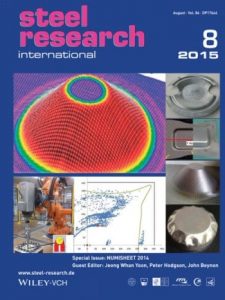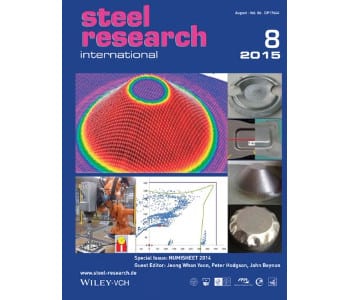 The NUMISHEET conferences are established as a world-class forum at which new ideas and technology in the area of sheet metal forming simulation are exchanged, making major contributions in the field of the numerical modeling of sheet metal forming processes. This conference series has been established as an international forum to assess the validity and progress of state-of-the-art simulations as compared with carefully conducted experiments and, thus, to provide vision and strategy for further development of sheet metal forming process modeling.
The NUMISHEET conferences are established as a world-class forum at which new ideas and technology in the area of sheet metal forming simulation are exchanged, making major contributions in the field of the numerical modeling of sheet metal forming processes. This conference series has been established as an international forum to assess the validity and progress of state-of-the-art simulations as compared with carefully conducted experiments and, thus, to provide vision and strategy for further development of sheet metal forming process modeling.
The NUMISHEET 2014 conference was jointly organized by Deakin and Swinburne Universities. Over 250 presentations were made in five parallel sessions over a period of 4 days. NUMISHEET 2014 was attended by approximately 300 participants. The conference included scientists, engineers, and software developers from academia, research institutions, and industry worldwide and provided a unique forum for stimulating discussions and exchange of new ideas pertaining to numerical methods, material behavior, process modeling, and forming technologies.
This special issue of Steel Research International, guest-edited by Jeong Whan Yoon, Peter Hodgson and John Beynon, is concerned with the numerical modeling of sheet forming and includes 13 articles that were selected from the conference that bring to the fore current scientific aspects of sheet forming. In order to design such a process, it is necessary to account for the attributes of the material in the simulations. Although the numerical methods are generic and can be applied to any material, the constitutive models, i.e., the mathematical descriptions of material behavior, are material specific. Therefore, understanding both macroscopic and microscopic aspects of the plastic behavior of sheet alloys is essential.

















